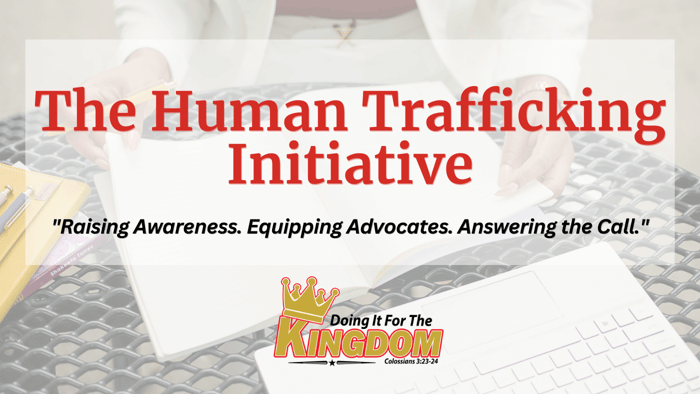Table of Contents
- The Hidden Crisis: Human Trafficking on College Campuses
- Why College Students Are Vulnerable to Trafficking
- How Human Trafficking on College Campuses Happens
- Real-Life Cases of Human Trafficking on College Campuses
- Red Flags of Human Trafficking on College Campuses
- What Colleges Can Do to Prevent Trafficking
- Leading Organizations Combating Human Trafficking on College Campuses
- Final Thoughts
- FAQs
The Hidden Crisis: Human Trafficking on College Campuses
The Hidden Crisis: Human Trafficking on College Campuses
 College is often viewed as a time for learning, growth, independence, and new experiences. However, this chapter is marred by manipulation, coercion, and exploitation for some students. While human trafficking is often associated with foreign victims or dramatic abductions, college campuses in the United States are increasingly being recognized as high-risk environments where traffickers prey on young adults—many of whom are away from home for the first time.
College is often viewed as a time for learning, growth, independence, and new experiences. However, this chapter is marred by manipulation, coercion, and exploitation for some students. While human trafficking is often associated with foreign victims or dramatic abductions, college campuses in the United States are increasingly being recognized as high-risk environments where traffickers prey on young adults—many of whom are away from home for the first time.
This blog will explore how human trafficking happens on college campuses, share real-world case studies, identify red flags, and offer actionable strategies for prevention and intervention.
Why College Students Are Vulnerable to Trafficking
College-aged individuals (18–24) represent one of the most at-risk age groups for both sex and labor trafficking. Factors that increase vulnerability include:
Financial stress or student loan debt
Lack of supervision or parental involvement
Housing insecurity or homelessness (especially among LGBTQ+ students)
Desire for belonging, attention, or love
Limited awareness of trafficking tactics
Many traffickers exploit college students’ need for money, housing, emotional support, or validation—making them easy targets, especially in the first year of college.
How Human Trafficking on College Campuses Happens
Traffickers do not usually use force. Instead, they rely on manipulation, grooming, and deceit. Here are some standard methods:
1. Romance Scams (The “Loverboy” Tactic)
Traffickers pose as romantic partners and build emotional bonds with students. Once trust is established, they pressure victims into commercial sex “to help pay the bills” or “prove their love.”
2. Fake Jobs and Modeling Scams
Some traffickers post job flyers around campus offering “quick cash,” “modeling gigs,” or “event promotions.” These seemingly harmless offers can lead to forced sex work or exploitative labor.
3. Sexual Exploitation through Online Platforms
Traffickers often recruit victims through platforms like Instagram, Snapchat, OnlyFans, and TikTok. Sextortion, digital blackmail, and grooming often begin online before escalating to in-person exploitation.
4. Peer Recruitment
Victims already under a trafficker’s control may be forced to recruit other students—particularly freshmen, international students, or those struggling socially or financially.
5. Housing and Transportation Offers
Students in need of housing or rides may be manipulated by traffickers who offer a place to stay or access to transportation only to trap them in exploitative arrangements.
Real-Life Cases of Human Trafficking on College Campuses
Human trafficking isn’t just a theoretical threat—it’s a real and present danger on college campuses across the U.S. These cases highlight how traffickers exploit campus life, social media, and emotional manipulation to lure and trap students. Below are deeper dives into some of the most recent and impactful cases:
✦ Case: University of Wisconsin (2021)
A 26-year-old man was arrested after using Facebook and Instagram to lure college students at the University of Wisconsin-Madison into a trafficking scheme. He initially approached his victims by pretending to be a talent scout for a modeling agency, offering them lucrative gigs. Once contact was established, he began to pressure them for explicit photos and coerced them into meeting in person. Victims reported that they were emotionally manipulated, isolated from their peers, and threatened with public exposure if they resisted. The trafficker also used peer recruiters—other women under his control—to identify and groom new victims. A man posed as a friend and recruiter, using social media to lure several female students into sex trafficking. He promised modeling gigs and income, then coerced them with emotional and financial manipulation.
🔗 Source: Channel 3000 News
✦ Case: Georgia State University (2020)
An undercover sting operation revealed that three students were being trafficked by a man who had ingratiated himself into student life on campus. He attended social events, connected with students through clubs and social apps, and positioned himself as someone offering mentorship and financial guidance. Once the relationship deepened, he used coercive tactics—threatening to withhold support or leak personal images—to force them into commercial sex acts arranged through classified ads. The case came to light when one of the victims confided in a trusted resident advisor, who then contacted campus security. Three students were trafficked by someone they met at a campus event. The trafficker used romantic manipulation and threats to force them into commercial sex. Police uncovered the case after one student confided in a resident advisor.
🔗 Source: AJC News
✦ Case: Florida College Consortium (2022)
In 2022, law enforcement broke up a trafficking ring targeting students from multiple colleges within Florida’s public university system. The trafficker used a fake talent agency as a front, advertising heavily on Instagram and attending student job fairs with printed materials and fake business cards. Victims were promised high-paying modeling and hostess gigs but were instead trafficked into escort services operating in Orlando and Miami. Several students who had previously experienced housing insecurity were especially vulnerable. Investigators found that the trafficker used ride-sharing services to transport victims and maintained control through financial threats and fake contracts. Multiple Florida college students were lured into a phony “talent agency” that turned out to be a front for an escort service. The trafficker used Instagram and local events to find victims.
🔗 Source: NBC Miami
Red Flags of Human Trafficking on College Campuses
Students may not recognize that they’re being trafficked, and peers or staff may miss the signs. Here are some common indicators:
Sudden isolation from friends or family
Unexplained access to money, gifts, or luxury items
Signs of physical abuse or exhaustion
Frequent absences from class or dropping out
Dating someone much older or overly controlling
Secrecy about online relationships or travel
Talk of a “job” that pays unusually well for little effort
What Colleges Can Do to Prevent Trafficking
1. Educate Students and Staff
Offer prevention workshops during orientation
Include trafficking awareness in health and wellness programs
Partner with nonprofits for survivor-led presentations.

2. Train Resident Advisors and Campus Security
Equip dorm staff and security personnel with tools to spot red flags
Implement trauma-informed training
3. Create Safe Spaces for Disclosure
Ensure counselors and wellness centers are trained in trafficking response
Promote anonymous reporting tools and survivor support groups
4. Monitor Campus Bulletin Boards and Online Groups
Remove suspicious flyers or online posts offering “easy cash” or modeling jobs
Encourage students to report concerning activity
5. Foster Peer Support Networks
Encourage clubs and groups to host peer education nights
Train peer leaders to recognize and report exploitation
Leading Organizations Combating Human Trafficking on College Campuses
1. The Set Free Movement
Faith-based organizations providing prevention education on college campuses.
🔗 https://www.setfreemovement.com
2. Polaris Project
Tracks national trafficking data and trains campus professionals.
3. Love146
Offers prevention curriculum and college outreach programs.
4. Doing It For the Kingdom Inc.
Provides faith-based training and trauma-informed resources tailored for college ministries, RA teams, and student affairs professionals.
🔗 https://www.doingitforthekingdom.org
Final Thoughts
Human trafficking on college campuses is a hidden but urgent issue. Students navigating independence for the first time are often unaware of the signs and tactics traffickers use. With education, awareness, and compassion, colleges can protect students and equip them to look out for one another.
If you're a college leader, campus ministry director, student affairs professional, or student advocate—this is your call to action.
Bring prevention training to your campus. Subscribe to our newsletter. Invite us to speak.
Together, we can make freedom louder than fear—and build campuses where safety, purpose, and healing thrive.
FAQs
1. How does human trafficking happen on college campuses?
Trafficking on college campuses often starts with manipulation, not abduction. Traffickers pose as romantic partners, mentors, or job recruiters. They may use social media or peer recruiters to gain trust before coercing students into sex or labor exploitation.
2. What are signs that a college student might be trafficked?
Red flags include isolation from peers, unexplained money or gifts, skipping classes, dating someone older or controlling, secrecy about activities or travel, and sudden emotional distress. These signs can signal exploitation and should be taken seriously.
3. Are men and nonbinary students also at risk of being trafficked?
Yes. While women are more frequently reported as victims, men and nonbinary students are also trafficked. Trafficking impacts all genders and backgrounds, especially when emotional or financial vulnerability is present.
4. How can colleges prevent human trafficking on campus?
Colleges can prevent trafficking by educating students and staff, training resident advisors, promoting safe reporting channels, and working with anti-trafficking organizations. Prevention starts with awareness and community support.
5. What resources are available for campuses fighting human trafficking?
Organizations like Polaris Project, Love146, the Set Free Movement, and Doing It For the Kingdom offer toolkits, training programs, and survivor-informed materials tailored for campuses. Partnering with these groups empowers schools to take effective action


